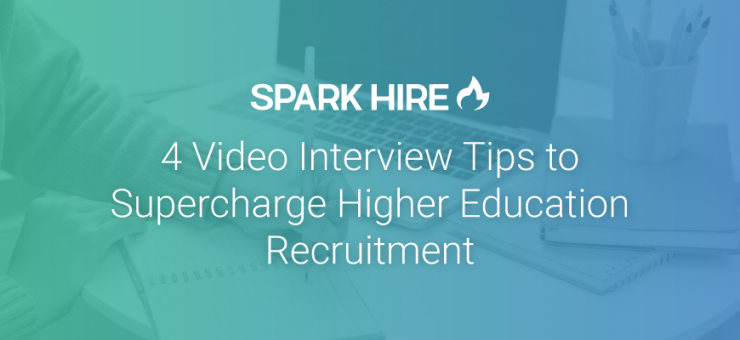Recruiting higher education employees has always been a challenge. However, shifts in hiring processes as a result of travel and health restrictions have put a halt to many in-person interview steps making it even more difficult. As a result, video interviews have become crucial for attracting and effectively evaluating candidates.
Interestingly, job seekers predicted this recruitment evolution back in 2019. In Monster’s 2019 State of the Candidate Survey, 72% of job seekers anticipated video in the future job search and 36% expected video calls with recruiters or potential employers in the interview process.
While the need for increased virtual tools is evident, age-old video interview tips aren’t enough to enhance the recruiting of higher education employees. You and your team must dive deeper into new, more intricate video interview tips to attract today’s candidates and increase assessment accuracy.
Here are four video interview tips for recruiting top higher education employees in today’s hiring climate:
1. Highlight video interviews in the job description
The candidate experience can be overwhelming for higher education job seekers. Applications alone can take candidates upwards of an hour to complete and submit. So, the idea of taking time for numerous in-person interviews is mind-boggling.
Additionally, many job seekers do not live in the immediate area of your job opening. If they assume it’d be necessary to travel for every step of a lengthy interview process, they’re more likely to gloss over the opportunity.
Make it clear in the job description and other job marketing outlets, such as social media posts, that video interviews are an important part of your recruitment process. Highlight each step to ensure all interested and qualified candidates can accurately assess the amount of time they’ll need to commit to applying. Transparency early in the process allows candidates to see how video interviews will decrease their time investment without sacrificing the quality of their experience.
2. Create a structured interview process
Many higher education candidates have similar backgrounds and experiences. They can easily check the boxes for required degrees and time in the field. These mirrored-qualifications make it challenging to determine who is the best job and cultural fit. That’s why the structure of your video interview process is arguably most important to how you assess talent.
Devise a structured interview plan before you begin recruiting for a role. Sit down with your team to create a predetermined list of interview questions to ask every candidate applying for the same position. You want to maintain consistency from start to finish.
As you enter the evaluation phase, use video interview recordings to compare candidate responses, and rate them on the same scale. This ensures both fairness and effective assessments.
3. Take the fear factor out of the video interview
Many candidates are unsure about video interviews. Yes, they’ve heard about them. But some have never been asked to get in front of a camera to vie for a job. As if they’re not already nervous enough about interviewing, throwing new technology into the mix might add to their intimidation.
Remove the element of fear from video interviewing by eliminating the unknown. Before the scheduled interview, personalize a welcome video message to share expert video interview tips.
Encourage them to perform a test run prior to their appointment, advise candidates on having a quiet background to decrease distractions and unwanted feedback, point them towards candidate resources, and let them know how to reach tech support for any questions they have when completing their interview.
4. Limit the number of interviews
Higher education recruitment involves a multitude of decision-makers for each open role. While it’s important to regard the opinions of all involved, it does make interviewing more challenging — and time-consuming — for both you and candidates.
Adding video interviews to your recruitment toolbox may give you a false sense of freedom to perform more interviews. Instead, their convenience grants you the ability to do the opposite — you can feel more confident decreasing the number of interviews with each candidate.
Record and share each interview with decision-makers before scheduling follow-ups. Ask them to collaborate by rating candidates directly on the video platform and sharing comments, questions, or concerns. Use these details to create valuable questions for the final round of interviews.
Always place the focus of quality over quantity when advising decision-makers on performing as few interviews as possible. Send a sample video interview to show how they’ll receive the same ‘first person’ experience through video interviews, allowing only the most qualified candidates to schedule in-person interviews.












